MANUSCRIPTS
Introduction
The arrival of Christianity during the fifth century AD began a process of change in Ireland. Christianity is a religion of the book and the Irish who became monks learned how to read and write. New bibles needed to be produced for the new monasteries and churches that were springing up all over the island of Ireland. The Irish monastries became famous for producing beautiful handwritten books called Manuscripts. In many cases these books were illustrated with images and patterns, these type of books are called Illuminated Manuscripts.
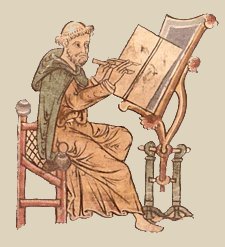
The Cathach
The Cathach dates from the 6th century AD. It is a copy of the psalms in Latin Vulgate ( a type of Latin) and is the oldest Irish manuscript. The title Cathach comes from the word battle in the Irish language and legend has it that the book was carried into battle. It was traditionally attributed to the hand of St. Columba himself but this is no longer believed to be so.
. It is a Psalter or book of Psalms and is written by one scribe in the “Early Majascule” script. Decoration in the manuscript is limited to the Initial Letter at the start of each psalm. The Initial letter is drawn or scripted a very large size and the letters that follow gradually become smaller until they reach normal size again. This technique of calligraphy is called ” Diminuendo”. Some of the script is written in red ink and red dots are used to decorate some of the Initial Letters.
. It is a Psalter or book of Psalms and is written by one scribe in the “Early Majascule” script. Decoration in the manuscript is limited to the Initial Letter at the start of each psalm. The Initial letter is drawn or scripted a very large size and the letters that follow gradually become smaller until they reach normal size again. This technique of calligraphy is called ” Diminuendo”. Some of the script is written in red ink and red dots are used to decorate some of the Initial Letters.
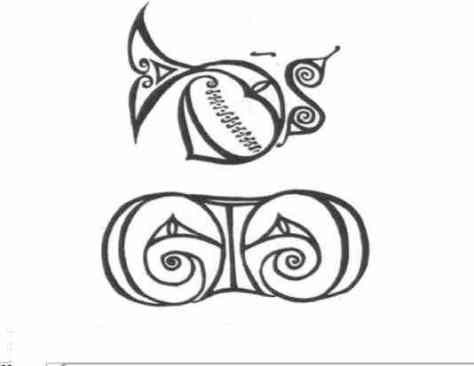
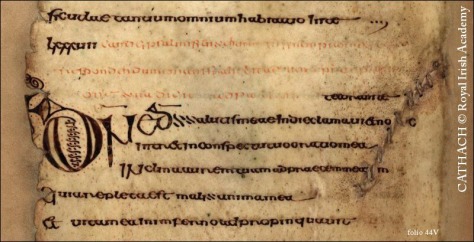
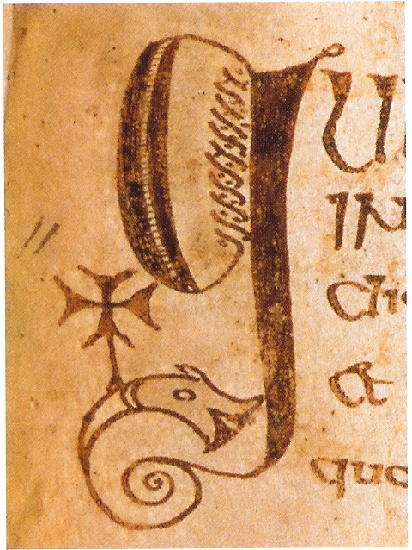

The Book of Durrow
The Book of Durrow dates from the 7th Century AD. It is the oldest illustrated manuscript in Ireland. It is a gospel book containing the four Gospels ( Matthew, Mark, Luke, John) together with the Canon Tables and some prefatory pages. The manuscript is written in Latin Vulgate.
Calligraphy; The calligraphy in the book of Durrow develops the techniques of using large initial capital letters and the “Diminuendo” which was began a century earlier in the Cathach manuscript. In the page shown below- the beginning of the gospel of St Mark, you will see there are different ways in which the scribe used capital letters. Firstly the very large “N” which starts off the Gospel of St Mark text dominates the page and is decorated using spirals and interlace in colored inks of yellow, red and brown. Like in the Cathach, dots are also used to decoate the letter,but now the whole letter is outlined with dots. In the first three lines of text the scribe uses large letters to mark the start of the text of the new gospel. On the body of the text, large Initial Capital letters are used to mark the start of the sentence. The Diminuendo is used in these parts to make the large capitals integrate with the normal body size script. There is a much greater use of the Diminuendo than in the Cathach.
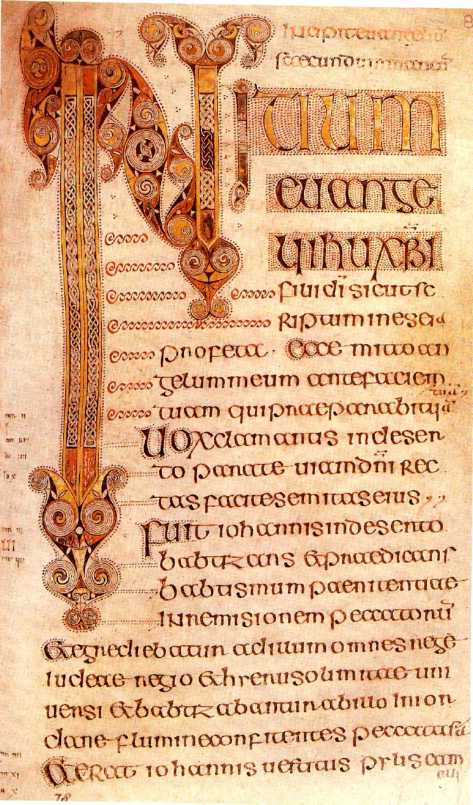
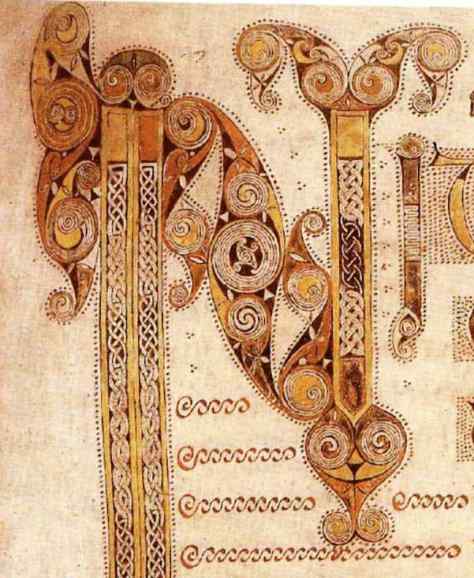
Illustration ;The Book of Durrow far exceeds the Cathach in its use of full page illustrations. Each gospel begins with two full page illustrations; a large evangelist symbol on one page and another full page illustration of abstract decoration called a carpet page. One of the carpet pages called “ The Biting Animals” shows the first example of interlace animals in Irish manuscripts. This page demonstates an influence from Saxon or Germanic Art from either Britain or the continent. Whereas in the Cathach, traces of early Christian Coptic influence could be found in the decoration of letters, a century later when the Book of Durrow was being produced, the scribes were demonstrably being influenced by their pagan neighbours.
The illustrations in the Book of Durrow show how the celtic use of curvilinear la Tene forms could be merged with art from other cultures to produce a new art style – Early Chrisitan Art (also called Insular Art). The 7th Century Book of Durrow gives us our first glimpse of this new style of fusion between pagan and christian art.
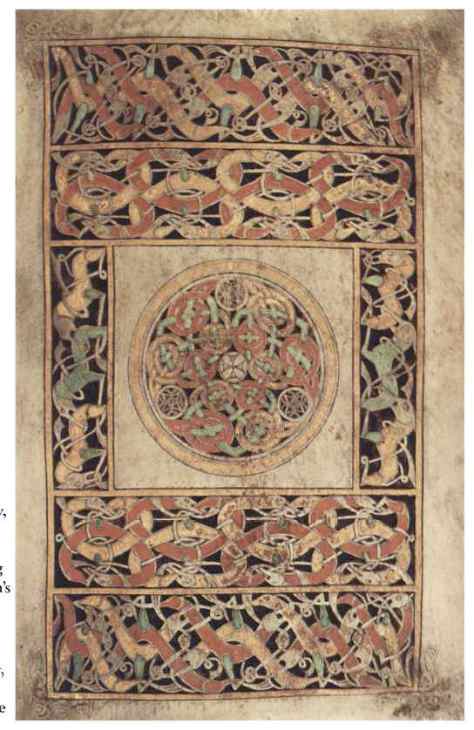


It is believed that all the illustrations in the Book of Durrow were made by one hand. The same style of illustration runs throughout the book. Interlace decoration is confined to rectangular borders. There is a use of space in the design of the illustrated pages. A great deal of empty or blank vellum contrasts with the busy decorative borders. The artist here makes a blank rectangle inside the decorative borders. In this blank rectangle, the artist places a central design or symbol. This page style is repeated throughout the book.
The artist also used the same style of colour throughout the book. In the decorative borders; the colours used are red, yellow and green on a black background. This makes these colours stand out brightly against the darkness of the black.There is also a strong use of brown or black to outline the four symbols of the evangelists, making them stand out in sharp contrast against the pale colour of the vellum.
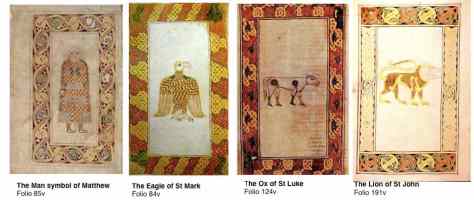
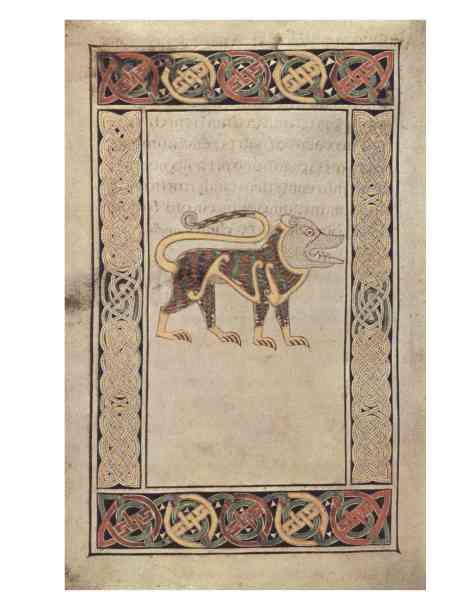


CHRISTIAN METALWORK
Ireland had a rich tradition of metal working which was added to by the introduction of Christianity. New artistic influences from Britain and Europe came to Ireland with the new religion.
The Tara Brooch 8th Century AD
The Tara Brooch was found on a beach in Bettystown, Co Meath. It dates from the 8th Century AD. It is an Annular Brooch – this consists of a ring and a pin. It was used to fasten a cloak onto clothes. The brooch is made of silver which was cast and then gilt (covered with gold). The entire surface of the brooch – back and front – is elaborately decorated.
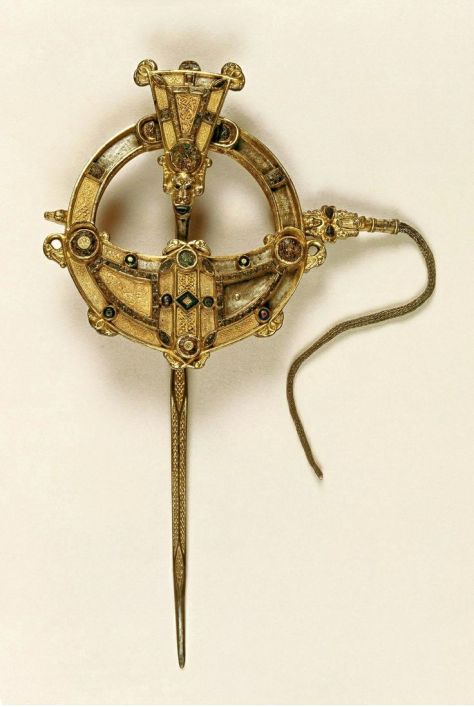
(A) The front is ornamented with a series of extremely fine gold filigree panels depicting animal and abstract motifs that are separated by studs of glass, enamel and amber. These panels of filigree were soldered into position. Several of the panels are now missing. The style of the decoration of ornate interlace that found in the Book of Kells.
(B) The back is better preserved than the front, probably because the decoration is cast and not filigree. The back is flatter than the front. The motifs consist of scrolls and spirals and is more similar to the La Tène decoration of the Iron Age than the Early Christian Style.
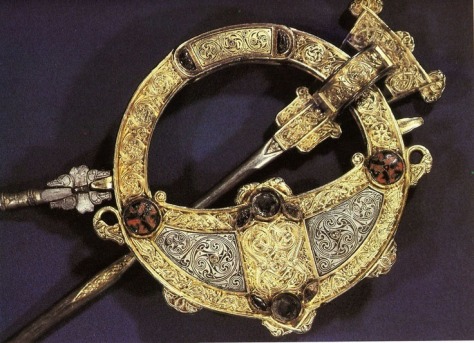
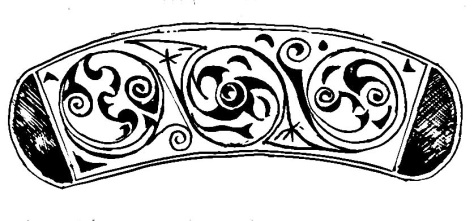
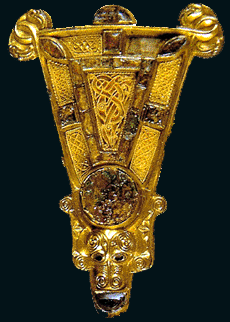
(C)The pin of the brooch is also highly decorated with gold filigree panels and studs. A large animal head adorns the point where the pin head meets the needle. This head is highly stylised and consists of spirals for the skull and the snout.
(D) A silver chain made of plaited silver wire is attached to the brooch by means of a swivel attachment. This swivel contains animal heads and two tiny cast glass human heads.
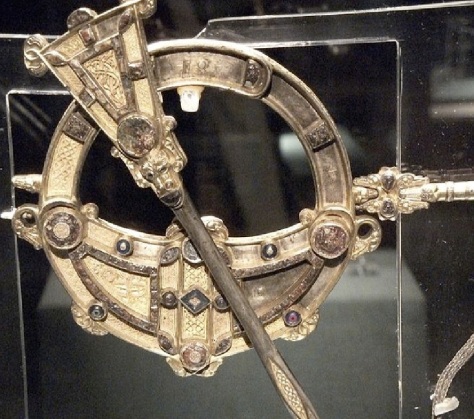
A short Audio- Visual presentation on the Tara Brooch
The Ardagh Chalice ( 8th Century AD)
The Ardagh Chalice is one of the finest masterpieces of the Early Christian Church. It was found near Ardagh, Co Limerick in the 19th century by a boy digging potatoes. The Chalice dates to the 8th Century AD and it was used to hold wine during the mass ceremony. The shape of the Chalice was influenced by Roman tableware. The Chalice is composed of more than 250 seperate pieces – silver , gold, enamel, glass, amber and semi-precious stones.
The bowl and the foot of the chalice are made of silver which was beaten into a rounded shape and then polished on a lathe.
The bowl is attached to the stem and the foot by a bronze pin.The stem is made of cast gilt bronze alloy.

The outside of the Chalice was decoated with gold, silver, glass amber and enamel. There is a band of gold filigree and studs encircling the bowl. There are 12 studs and 12 panels ( 10 panel of filigree exist -two are now missing).
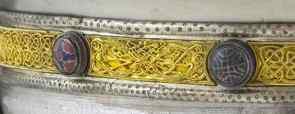

Below this band, running around the entire bowl is an inscription of twelves names – the names of eleven apostles and St. Paul, ( Judas the twelfth Apostle is excluded). Museum historian Raghnall O’ Floinn believes that the repeated use of the number twelve is significant.Perhaps it is symbolic of of the 12 Apostles who shared the wine with Jesus at the last supper.
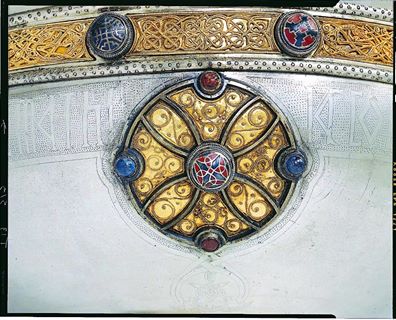
On the cup are two large roundels with cross shaped designs – back and front. Below the two handles there is animal decoration Incised into the silver bowl.
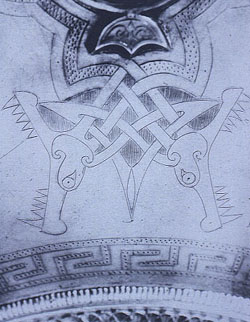
The two handles have elaborate escutcheons which are decorated with complex glass studs and filigree panels.
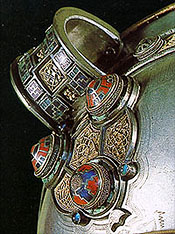
The underside of the Chalice was also highly decorated and contains a rock crystal at the centre.

Here is a short Audio- Visual Presentation on the Ardagh Chalice
No comments:
Post a Comment